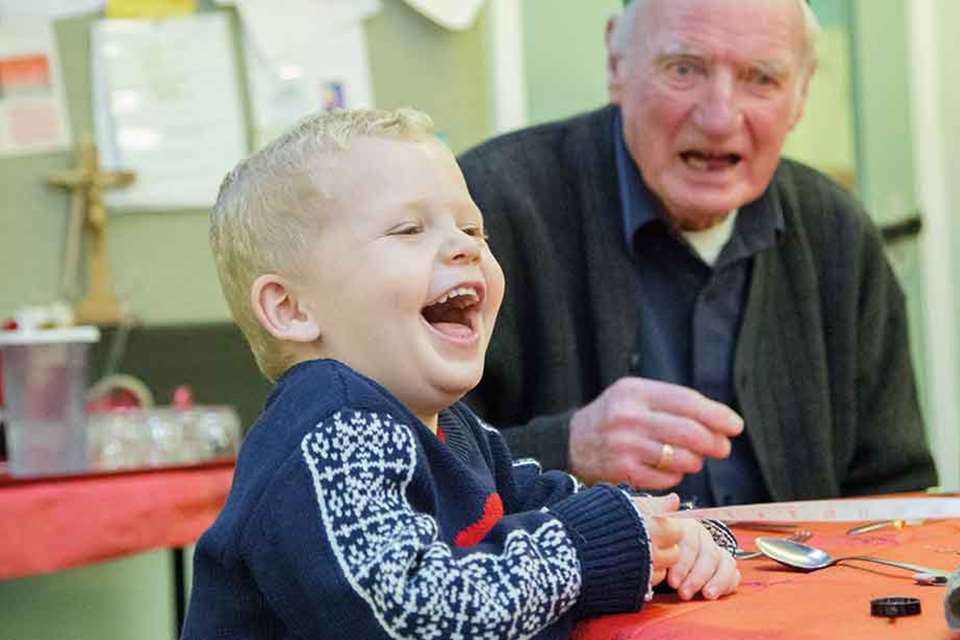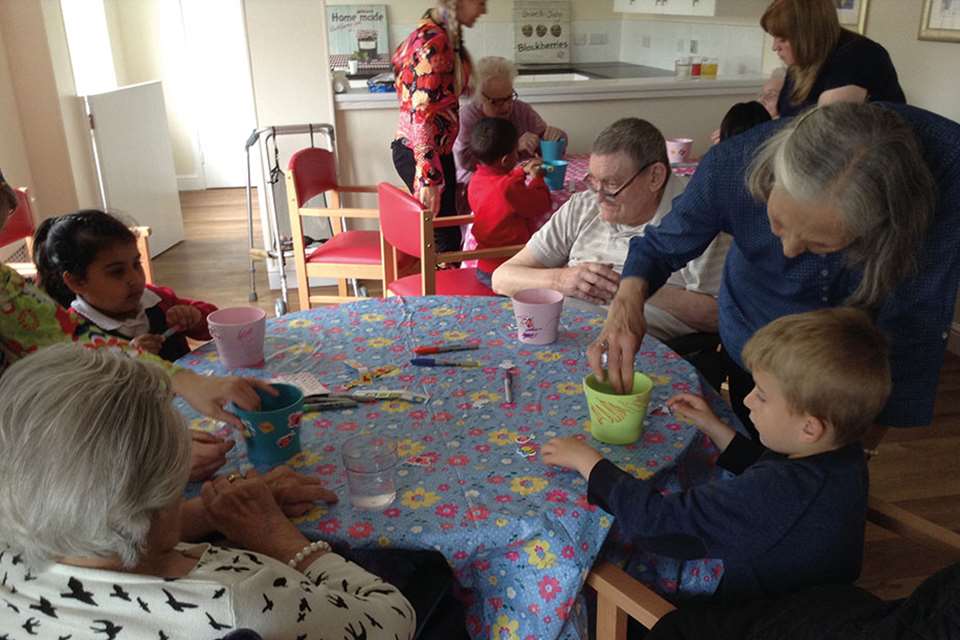EYFS Best Practice: All about… Intergenerational Co-location
Lorraine George
Monday, April 2, 2018
Intergenerational co-location is the way forward in developing early years practice to meet the needs of young children and the elderly today. Lorraine George explains why

Download the PDF of this article
Co-located intergenerational care is created when elder care and childcare are provided within the same provision. This was started in the 1970s in Japan and has since been adopted by other countries, in particular the USA. Originally set up to face the challenge of an ageing, isolated elderly population, a growing body of evidence now suggests that regular engagement between the ages in a co-located setting benefits both groups in terms of improving health and well-being, as well as also impacting favourably on staff, employers and the community.
Last year, I was awarded a Winston Churchill Travel Fellowship (see box, overleaf) to research intergenerational co-location in the US. Over a four-week period, I visited three states and spoke to a variety of stakeholders involved in seven co-located settings. My findings are now outlined in my report, ‘Starting Young: Lifelong lessons from intergenerational care and learning’ (see More information). In it, I conclude that bringing the old and young together is positive for all participants, but also that co-location can exist in a variety of business models, as well as in types of provision other than childcare, such as Reception and Year 1 classes.
I believe that the nurturing environment that can be found within care homes – from surrogate Grandmas and Grandpas – is ideal for meeting the emotional needs of many young children today and can improve outcomes for all children.
CASE STUDY
One of my visits that illustrates the type of provision being developed in the USA was to Windsor Place Care Home in Coffeyville, Kansas. Here, a School District Kindergarten is sited within the Home, and I was able to see at first hand the benefits to children of co-locating a school Reception classroom within a residential care home.
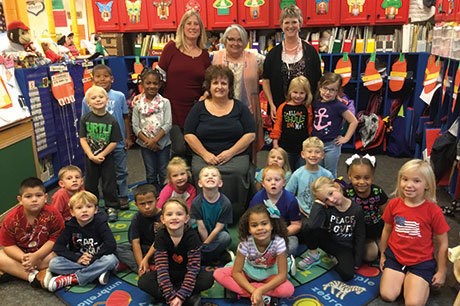
How the programme came about
Coffeyville is a small town in the Midwest with a population of about 10,000 people. Many families are separated by huge distances, which limits the time they spend together As a consequence, children often have little experience of building relationships with older people, including their own grandparents.
Windsor Place CEO Monte Coffman started by arranging regular visits from school children to the care home, believing that ‘something magical happens when you combine children and elders’. However, the visits left the residents ‘feeling empty’ due to the lack of depth to their relationships with the children. He therefore decided to pursue the idea of bringing children into the care home on a permanent basis, to give the children and elders an opportunity to learn and grow together. Luckily, his aim to build a classroom for the children inside Windsor Place coincided with a shortage of kindergarten places, as the local elementary school had grown rapidly. After speaking to a supportive school district superintendent, a partnership was formed.
The classroom was established in 2008 and provides education for 20 kindergarten children aged five to six. It was created out of converted bedroom space, next to a large common room with an outdoor playground, with close access to a car park for drop-off and collection by the school bus.
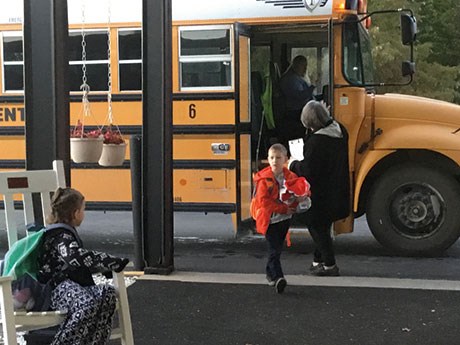
Demand for places
Parents in Coffeyville can choose to send their child to the elementary school or Windsor Place. Such is the demand for places at the Home that parents have to enter a lottery to be allocated a place for their child.
Parents believe that spending a year in such a nurturing environment makes a huge difference to children – in fact, one parent told me, ‘It won’t just change your child, it will change your family.’
About 80 per cent of the children attending Windsor Place receive the equivalent of free school meals, which reflects the poor socio-economic profile of the local community.
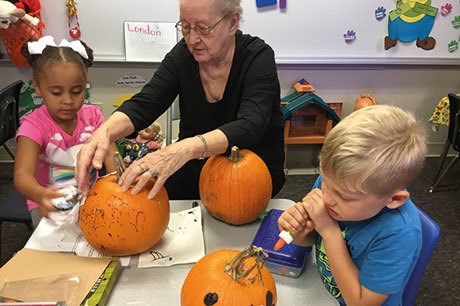
Vision
The vision was to create a community within Windsor Place by providing opportunities for residents and children to meet throughout the day so they could develop meaningful relationships with each other.
With residents taking on the role of surrogate grandparents, it was hoped that through this relationship, children would understand, learn about and value the importance of diversity and difference.
Day to day
The children attend Windsor Place from Monday to Friday, but spend Thursday afternoons at the local elementary school so they can experience a typical school environment. They eat lunch there and access other services such as speech and language support. The school day starts at 7.30am, with children arriving in school buses, having been collected from several miles away, and the day finishes at 3.05pm.
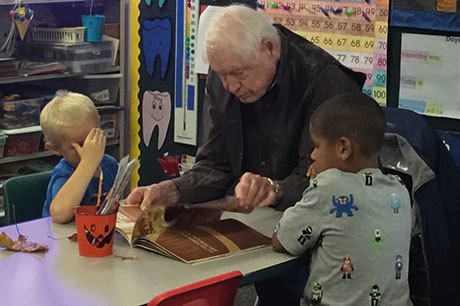
Curriculum
America does not have a national early years curriculum, so each state follows its own curriculum, which in turn is interpreted within each school district. In line with the local school district curriculum, the Windsor Place teacher plans the activities and lessons that the children will follow.
Once these are set, the teacher meets with the liaison officer, whose role straddles the care home and classroom (see box, overleaf) to see which activities can be developed or adapted to bring the residents and children together. The aim is not only to meet the learning and developmental needs of the children through, but also those of the residents, many of whom have dementia or Alzheimer’s.
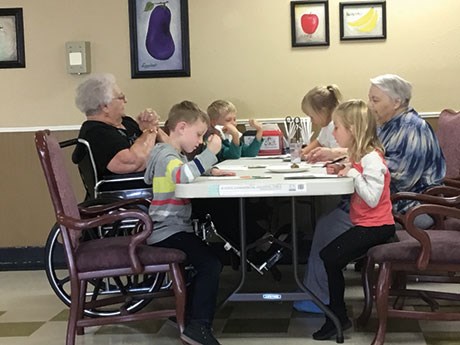
Transitions and activities
Both the teacher and liaison officer manage the children’s transition to Windsor Place, and for the first week the children stay in the classroom, learning about their new environment. They are taught songs that will form part of their routines and are encouraged to think about what it may be like to be elderly or disabled and how they should treat residents when they are around them. Within Windsor Place, children call the residents ‘Grandma’ or ‘Grandpa’, followed by their first names (for example, Grandpa Bill) and happily take on the role of surrogate grandchildren.
The classroom has large windows into the care home so that the children can see and respond to residents waving or passing by. After the first week, the children become ‘Breakfast Buddies’ when, on their arrival at the setting, they walk around and say ‘hi’ to residents and share any news before going to their classroom. The following week, the children do the same when they leave the setting and often sing songs or share their plans for the rest of the day with a chosen resident.
Gradually more and more activities (lasting about 30 minutes) are added into the day, such as ‘Book Buddies’ (when the children choose a book to share with a resident), seated exercise classes, playing Bingo (which offers opportunities for maths learning and number recognition), and art and craft sessions.
Different children engage with the residents many times during the course of the day and they love the opportunity to do this. I often observed the children groaning loudly if they were not on the rota for one activity or another.
Staff model how to engage with residents and the children are supported until they feel comfortable in initiating conversations with residents. Some may be happy to shake hands, others may just wave, but their confidence grows as the term progresses so that by the end of the year they are very comfortable with the residents and are happy to hug them as they would their own grandparents.
As well as the children going into the care home space, the residents also come into the classroom on a daily basis as ‘volunteers’ to support the teacher, an arrangement that provides the residents with an opportunity to feel needed and valued. The residents genuinely love the children, and the children know this and love them in return. The children become incredibly close to the residents, often having a favourite Grandma or Grandpa, and with the support of their families, they often visit to see their elderly friends during the holidays.
One child was astonished to learn from me that in the UK, children did not go to school with their ‘Grandmas’ and ‘Grandpas’. He said it was like having ‘your family at school’, and who wouldn’t want that?
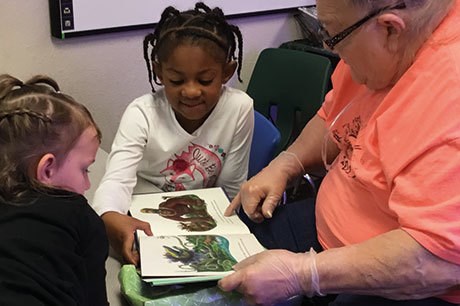
Benefits to the children
With no mandatory requirement for the provision of pre-school education in the US, not all children experience pre-school education, which often leaves them ill-prepared for school life. Co-located care offers young children an extended transition into education with the opportunity to build meaningful relationships with surrogate grandparents in a mutually beneficial way. Parents in Coffeyville choose to place their child in a co-located environment because it offers their children so much.
Evidence at Coffeyville, and more generally, suggests that intergenerational co-located care:
- provides opportunities for children to improve their communication and language skills. Speaking to elderly people requires a range of different strategies, which the children use repeatedly
- improves children’s literacy through the daily Book Buddies programme, where children share a book with a resident every day
- enables children to meet a more diverse range of people and positive role models, helping them to learn how to build relationships with others, particularly learning from grandparents, which so many children do not have the opportunity to experience
- helps to build children’s self-esteem and confidence. Through helping others, they learn empathy and compassion, which improves their ability to learn.
- improves children’s personal, social and emotional development through the relationships that they build with the residents – the children feel loved, listened to and supported
- offers such a strong sense of community that children feel as if they have brought their family to school as their supporters.
Despite an overwhelming amount of anecdotal stories testifying to the many benefits of co-location for children, there is a need for more data and evidence for the long-term impact of intergenerational co-location on children. Washington State University is now undertaking a longitudinal study of the pupils who have attended co-located settings to determine the long-term impact that this innovative approach has. The results are expected in May.
EXPERIENCING LOSS
While such case studies may leave some UK practitioners feeling inspired to develop their own intergenerational programme, others may be deterred by the possible death of care home residents and how to deal with it.
The subject of death cannot be avoided when considering intergenerational practice. It is a fact that most residents are elderly and only enter the home when their medical needs are so great that they can no longer manage alone.
Many of the people I interviewed during my travels spoke about how close the children become to residents, and residents’ families shared how much the contact with children had meant to their family member. So, how do children deal with the loss of a favourite Grandma or Grandpa?
As an early years practitioner interested in the concept of co-location, I certainly felt that it was an important question to ask as part of my research. Should we shield children from death or deal with it head on, using age-appropriate language and concepts that children understand?
Most of the settings I visited were based in rural Midwestern towns, and despite talking to dozens of people involved in co-location in some way, I didn’t meet anyone who said that a death had been traumatic for a child.
The parents I spoke to saw death as a natural progression and believed that their child grew emotionally because of their experience. It was not an experience they wanted to avoid, as they felt it was inevitable that at some point in their child’s life, someone would die.
Generally, participants believed that the possibility of a death occurring did not outweigh the vast benefits that come from developing loving relationships with residents. This belief was also mirrored in the conversations I had with older intergenerational pupils, who spoke fondly about their favourite residents, some of whom had died while they attended the setting.
Saying goodbye
One older pupil recalled they had asked if their favourite Grandma could be buried in the slippers that he had bought her for Christmas, and the resident’s family were only too happy to oblige. In fact, parents whose children had formed a close relationship with a resident said they had followed the child’s lead when they had expressed a desire to attend the resident’s funeral. One parent said they had allowed their child to say goodbye to the resident and view the open casket because they had expressed a wish to do so (the child was five years old at the time). The child was pleased to be able to say goodbye and thank the Grandma for being her friend.
One setting said it only tells the children that a resident has died if a child specifically asks where the person is. They then spend time with all the children discussing what the resident did for them and how they helped them, explaining that it is okay to feel sad and to miss someone.
They also discuss how the children can help the resident’s family by, for example, making a card or a book for them. The children often visit the family to pass on their sympathies, with some children and their families attending the resident’s funeral.
The staff members I interviewed said children deal well with the death of a resident because they generally don’t see it as a finality and tend to grieve differently – they may ask about the person, then jump quickly to a completely different subject. When asked, staff respond appropriately and truthfully, and the children listen and move on.
There is no doubt that death has to be explained sensitively to children, but as one parent told me, when her child experienced a death in the co-located setting she attended, ‘being here helped her to understand, it was a healthy experience for her’.
RECOMMENDATIONS
If you feel the benefits of engaging in intergenerational activities with a local care home would far outweigh the challenges, then these are my key recommendations to getting started and running a successful programme:
Starting point
Don’t feel daunted. Starting can be as simple as contacting and visiting your local home to find someone that wants to work in partnership with you. The next step should be to have conversations about shared expectations and the outcomes you are looking for.
Building relationships
Allow plenty time for relationships to develop. Even as adults we can feel uncomfortable visiting care homes, so it will take time for you and the children to build relationships with the residents to a point where everyone feels comfortable with each other – regular visits are key to this.
Remember that children of different ages may take longer to become accustomed to visiting elderly people; meeting the needs of the children in your care should always remain the top priority. It is important to discuss ground rules for acceptable behaviour by both children and residents and to support children appropriately when building friendships. They should not be forced to do anything that makes them feel uncomfortable; be led by each child in this.
Parents and residents
Organise a Q&A session for the children’s parents so that they can raise any queries they may have about your proposals. You may find it useful to invite the care home manager to attend so they can answer any questions about residents and the care home itself.
Be honest about the needs of the residents that the children will be meeting, and make sure that both you and the care home manager have considered which residents will take part on any given day. If residents have had a bad night or children are feeling unwell, they may not be in the best of moods to take part in an intergenerational activity, so you may need to organise some sort of selection process.
Risk assessment
As best practice, you would be advised to carry out risk assessments for visiting the care home, covering your journey there, the rooms the children will be using, as well as the activity itself.
You may find it helpful to complete the assessments with the care home manager as you may see risk differently. Don’t forget that you can always have a chat to your insurance company if you have any queries.
Toileting
Don’t forget to think about toileting for yourself and the children while you are in the care home. Ideally, there should be a toilet near the room where the activity is being held. Ask whether the toilet can be for the children’s use only to reduce the spread of germs. You may find it useful to take a child-sized toilet seat with you, as the care home is unlikely to have one.
Activities
Plan activities well ahead and in partnership with the care home staff. Decide who will provide what and give careful thought to the abilities of both the residents and the children who will be taking part. It is important that activities are pitched at an appropriate level so that everyone feels they have achieved a positive outcome.
Expectations
Have realistic expectations about what you and care home staff hope to achieve from the visits. Set yourself a time period after which you will both evaluate how the visits are working for all participants and how you wish to move forward with the project.
CONCLUSION
There is no doubt that UK society is similar in many ways to that in the US. Both have many ‘time poor’ young parents who lack the help of an extended family, a situation that has weakened the role of older people, particularly in their capacity as teachers and role models.
Elders often live in isolation either at home or within a care facility, and children have fewer opportunities to interact, understand and learn from a diverse range of role models.
Increasingly, there is concern that many children are poorly prepared for transition to school. As a consequence, they are personally, emotionally and socially behind their peers, which impacts their ability to learn.
Co-located intergenerational learning programmes in the USA are now addressing these factors and making a difference to the children and families that are involved. Given the current focus in the UK on poor social mobility, closing the attainment gap, improving school readiness and the need to improve young children’s language and literacy skills, intergenerational learning could make a significant contribution to these challenges.
ESSENTIAL ROLE: THE LIAISON OR ACTIVITY DIRECTOR
Intergenerational co-located care is in its infancy in the UK, and for most early years settings involved in some sort of intergenerational project, it usually means a weekly visit to a local care home.
For the well-established co-located settings in the US, experience has shown that settings need a dedicated liaison or activity director (some have both) to work across the care home and childcare provision. Their role is to ensure, through their detailed knowledge of the residents and the children, that planned and spontaneous interactions between the elderly and the young are mutually beneficial.
During my trip it became increasingly obvious that this liaison role is essential for good intergenerational practice – as is a teacher who values the elderly and can understand the nature of adult care, so enabling both parties to work in harmony.
From my observations and interviews with those in a liaison role, it became clear they must:
- be trained in common medical conditions that may affect residents, such as dementia, so that on a daily basis they can decide which residents can participate and in what activity they can achieve good outcomes
- have a good relationship with the children’s teacher so that they can gather the same participation information about the children. They also need to be the type of person who can take instruction from the teacher with regard to planning and resources
- have dedicated time in the classroom to get to know the children so that they can respect the liaison director’s authority. They should also organise a rota system to ensure that all children have equal access to activities
- be able to subtly orchestrate intergenerational interactions so that each participant feels they have achieved and been recognised – so thought needs to be given to the level of activities that are offered
- be involved in regular planning meetings with the teachers to discuss how to link and adapt intergenerational activities to the children’s curriculum
- involve children and residents in setting appropriate ground rules for behaviour on both sides
- have the opportunity to get to know parents well, and possibly be involved in the drop-off and collection of children to enable this
- be a champion and good role model for intergenerational practice and get to know and involve the community within the care home.
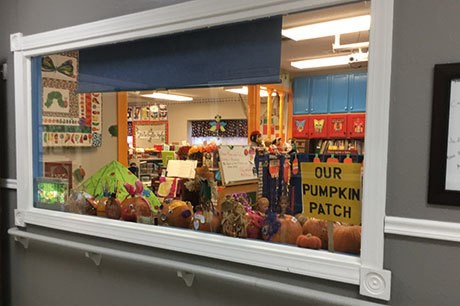
WINSTON CHURCHILL MEMORIAL TRUST
The Winston Churchill Memorial Trust was established after his death in 1965. Thousands of people, out of respect and in gratitude for Churchill’s inspired leadership, gave generously so that a living memorial to him could benefit future generations of British people.
As Sir Winston’s national memorial, the trust carries forward his legacy by funding UK citizens from all backgrounds to travel overseas in pursuit of new and better ways of tackling a wide range of the current challenges facing the UK.
Each year, the trust awards more than 100 fellowships, and successful applicants are known as Churchill Fellows for life. Through the awards, fellows are able to bring back fresh ideas and new solutions, so benefiting others, and themselves personally, and maximising what they can achieve as leaders and role models in inspiring others.
These opportunities are offered to people of any age, gender, ethnicity or religion, with or without educational qualifications, and in any occupation or none, as long as they have a desire and motivation to improve their community, profession or field.
For more information, visit: www.wcmt.org.uk
MORE INFORMATION
- Lorraine’s Winston Churchill Fellowship report, ‘Starting Young: Lifelong lessons from intergenerational care and learning’, can be viewed at: www.wcmt.org.uk (in the Learning & Practice section)
- For information about the development of intergenerational learning in the UK, visit: http://unitedforallages.com
- Mixing Matters, a new report on intergenerational co-location in the UK, is at: http://unitedforallages.com/wp-content/uploads/2018/01/Mixing-Matters-United-for-All-Ages-paper-Jan-2018-.pdf
- Information and resources about intergenerational care in the US, www.gu.org
- Lorraine’s US travel blog, https://intergenerationallearningthebenefitsofcolocatedcare.wordpress.com
Lorraine George is a childminding development worker in the Early Years Advisory Team at Torbay Council



